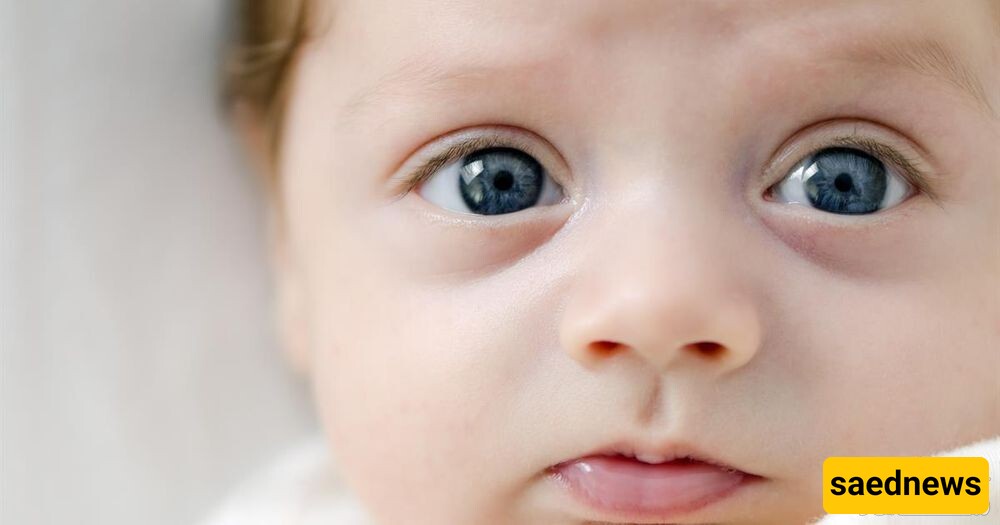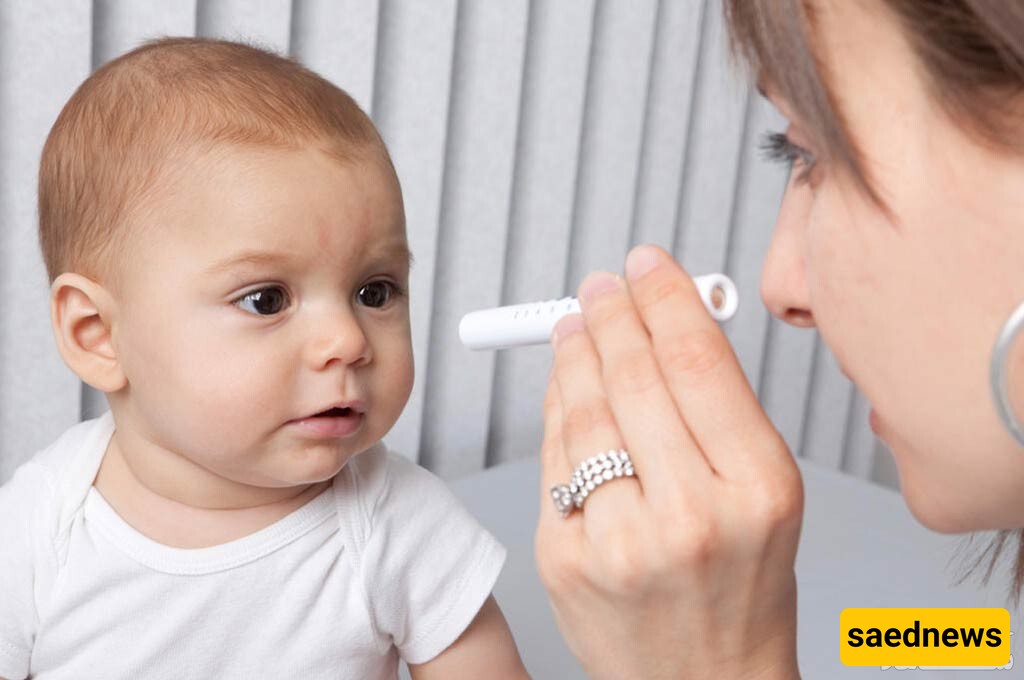All children are born nearsighted, meaning they are unable to recognize distant objects. The ability to see distant objects is something they gradually acquire over time. This article provides information on children's visual abilities.

Unlike a baby's hearing, which is fully developed by the end of the first month of life outside the womb, vision develops gradually over six to eight months. At that point, the baby can see the world almost as clearly as an adult. A newborn can distinguish between light and darkness and even recognize faces from a distance. From three months onward, a baby's vision strengthens, allowing them to recognize and react to caregivers and those around them.
This is because, although a newborn’s eyes are physically capable of seeing at birth, their brain is not yet able to process all the visual information. As a result, everything appears blurry for a while. As the baby’s brain develops, so does their ability to see clearly, equipping them with the necessary tools to understand and navigate their environment. Initially, when you hold your baby in your arms, they can only see your face, but their clarity of vision continuously improves month by month.

As mentioned earlier, a baby's ability to see grows and strengthens as they get older. The stages of vision development in infants at different ages are as follows:
During the first week, everything appears black and white to the newborn. Color vision begins to develop in the coming months. At this stage, the baby can only see clearly within 20 to 30 cm (about 8 to 12 inches), allowing them to recognize the faces of their parents when held close. A mother’s face is the most interesting and soothing image for a newborn. Showing colorful objects up close can significantly enhance a baby's visual development.
By the second week, facial recognition becomes easier for the baby. They can focus on faces and respond with smiles. The best distance for them to see objects remains 20 to 30 cm. The emotional bond between the baby and the caregiver grows, which helps in calming the baby.
At this stage, the baby learns to pause and stare. While their vision is still clear only within 20 to 30 cm, their attention span increases, allowing them to focus on their mother’s face for up to 10 seconds. Talking to the baby, smiling at them, and showing colorful toys can help stimulate their vision.
By the fourth week, the baby can observe objects around them while moving their head, although they do not yet track objects with their eyes.
At birth, babies do not know how to coordinate their eyes properly, which can make their eyes wander randomly or appear slightly crossed. By the first or second month, they will learn to focus both eyes on an object and follow a moving object. You can test this by moving a rattle in front of their face and observing their reaction. Babies also enjoy eye contact, so holding your face close and slowly moving your head from side to side can help strengthen their vision.
While newborns can see colors, they initially struggle to differentiate between similar shades, such as red and orange. This explains their preference for high-contrast black-and-white patterns. Over the next few months, their brain will learn to recognize different colors. They will gradually prefer bright primary colors and more complex patterns. Parents can encourage this development by showing them pictures, books, and colorful toys.
By four months, babies begin to perceive depth. Until now, understanding the position, size, and shape of an object was difficult for them. However, by this age, they develop the motor skills needed to reach for and grab objects. Providing them with easy-to-hold toys, such as rattles, can help them practice this skill. Otherwise, they may start grabbing things like hair, cups, or earrings.
At this stage, babies improve their ability to see small objects and track moving items. They can even recognize an object after seeing only part of it. This demonstrates their growing understanding of "object permanence"—the concept that objects continue to exist even when out of sight. This is why babies love playing peekaboo. They can now distinguish between bright colors more effectively and begin to recognize subtle differences between shades.
At birth, a baby's vision is between 20/200 and 20/400. By eight months, their vision has almost reached its maximum clarity and depth perception. While they still focus more on nearby objects, they can now recognize people and objects across a room. Their eye color is likely close to its final shade, although slight changes may still occur.
During this period, babies become more interested in images. They begin to recognize smaller objects and can even spot tiny items, such as crumbs. Additionally, they develop the ability to focus on hidden objects.
By this stage, babies have nearly completed their first year of life and have strong vision. They can look through small window openings and recognize familiar faces easily. Their familiarity with different areas of the house allows them to explore and play more confidently. They also spend more time staring at objects that interest them.
As parents, you can take various steps to monitor and support your child’s visual development. Some important strategies include:

Ensure that your baby’s eyes are examined during every health checkup. The doctor should assess the structure, alignment, and movement of the eyes, as well as check for any congenital issues or other eye conditions.
If you or your spouse have a family history of serious eye problems—especially those that appear in childhood—inform your doctor. When the child reaches three or four years old, the doctor will test their visual accuracy using pictures or letters. If any problems are detected or if there is a strong family history of vision issues, the child may be referred to a pediatric ophthalmologist. Early detection is crucial since some eye problems are difficult or impossible to correct later in life.
Move a bright-colored toy or rattle in front of your baby’s face, first from side to side, then up and down. This should capture their attention. Most babies cannot follow vertical movements smoothly until three or four months old.
Observe what visually stimulates your baby, such as ceiling fans, birds, tree leaves, or children playing.
Encourage your baby’s interest in primary colors and soft hues by using colorful mobiles, posters, and books with high-contrast images.
Around one month of age, anything moving in front of their face will catch their attention. Many household objects can be just as effective as store-bought sensory toys.
Research shows that babies prefer looking at human faces over other shapes and images. Keeping your face close to your baby allows them to study and recognize it, especially in their newborn stage.
Although pediatricians check a baby’s eyes during routine visits, parents should consult a doctor if they notice any of the following:
The baby cannot follow a face or a toy with both eyes by three or four months.
The baby has difficulty moving one or both eyes in different directions.
The baby’s eyes jump or move erratically and cannot remain steady.
One or both eyes frequently turn inward or outward beyond the first few days of life.
One pupil appears white.
The baby's eyes seem overly sensitive to light, are constantly dry, or excessively watery.
Additionally, premature babies—especially those born significantly early, with infections, or requiring oxygen—are at higher risk for eye conditions such as astigmatism, nearsightedness, or retinopathy of prematurity. If necessary, they should be referred to a pediatric ophthalmologist for early screening.
An infant’s vision develops rapidly and uniquely compared to other senses. Since vision plays a crucial role in their understanding of the world, parents should monitor their baby's eye health from birth. Early detection of any issues can help address potential problems before they become serious.

